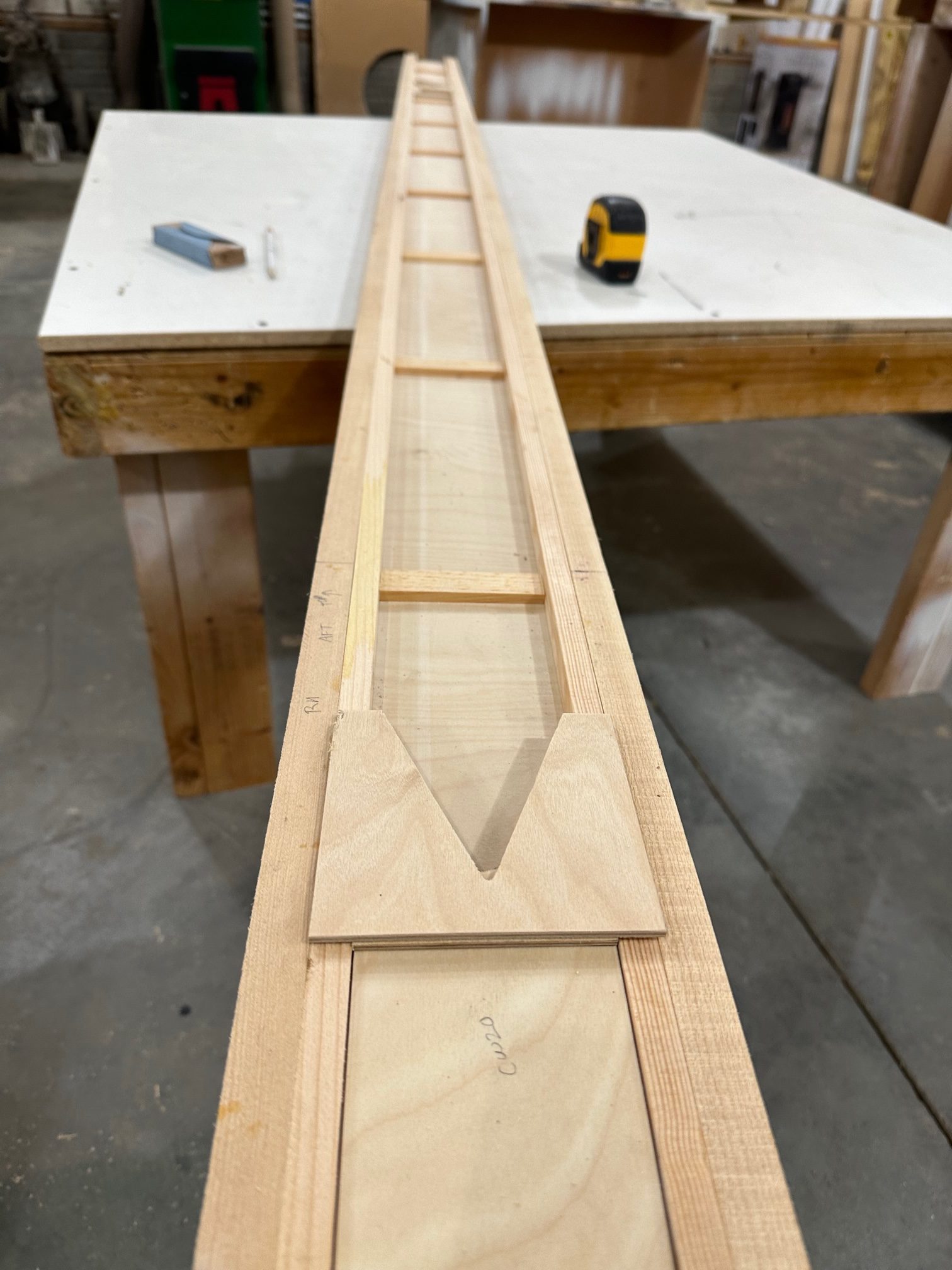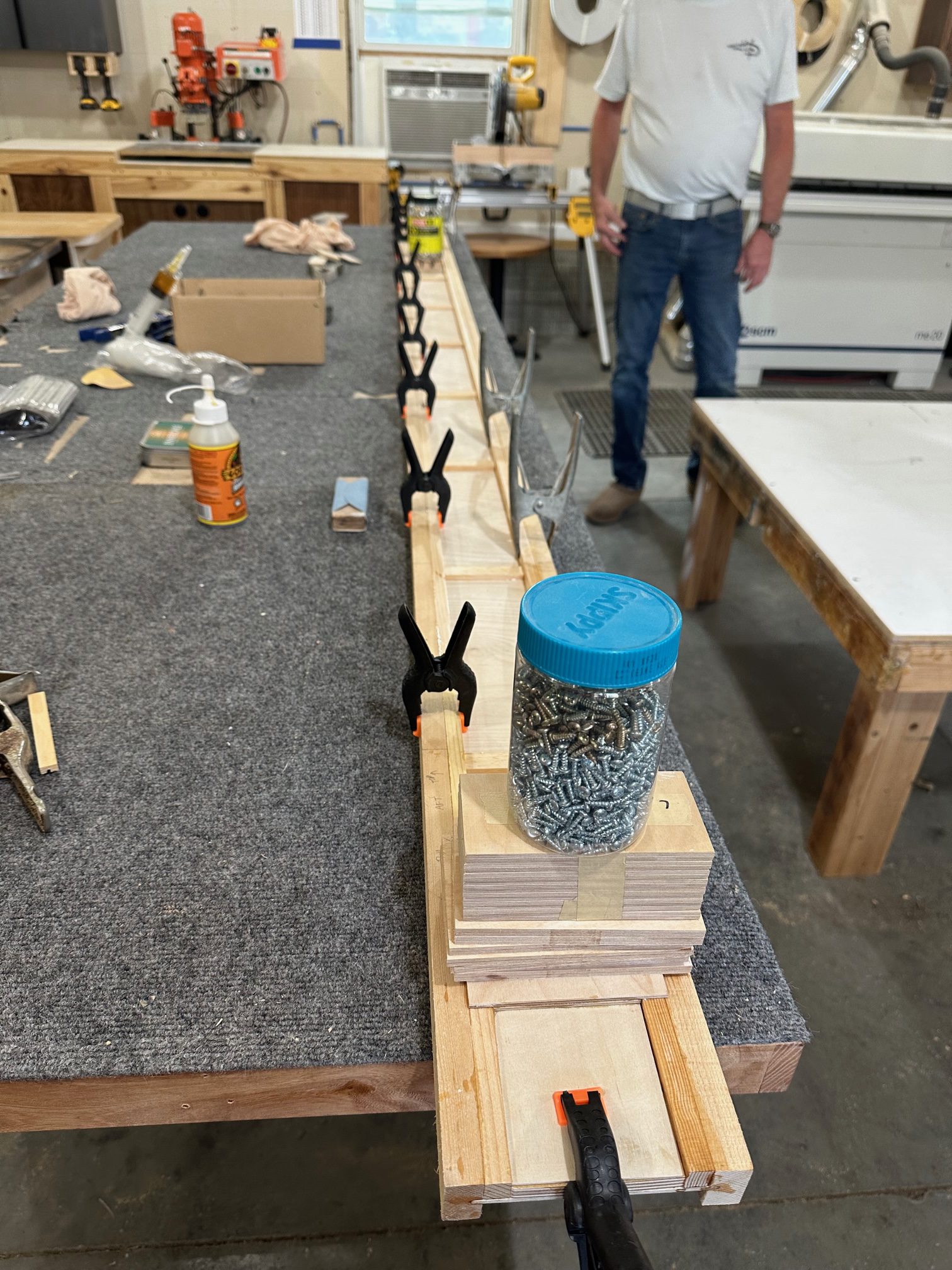It’s been a bit of a learning experience building this spar. The amount of glue required, of course, is one thing – about 45 ml or so, I think, for the whole thing. There are still a few pieces of plywood that need to be glued, most of them for the flying wire and N-strut attachment brackets. Yesterday Stu showed me his pneumatic pin nailer, which I plan to use. It’s not unusual to use staples or small brads to hold wood together while glue cures. This thing shoots ridiculously small wire pins — 22 or 24 gauge, I think — with no heads. They’re just enough to hold the wood in place, and won’t need to be removed.
I also found that the spar has about 1/8″ of gradual taper toward the tip end. That was a builder error; it’s supposed to be a constant 5-3/4″ across the entire length. When I assemble the other three they will be correct. It’s not a critical error; I can fix it with shims when the wing is assembled. It’s even noted in the plans that ribs may be shimmed where they attach to the spar. It’s just been an inconvenience. Before I found that taper we’d cut some reinforcing blocks that fit between the spar stiffeners to a constant length. Some needed to be sanded, some needed to be re-cut because they were too long. That’s when I measured the spar height more carefully. I had just measured one end and a spot partway down the spar before — I guess it didn’t occur to me that it would have a taper to it. Everything else is good, there’s no bend, twist, or warping, so it’s good to go.
Other minor things — the plans call out 120-1/4″ for the spar length, but the main caps are 120″. Obviously the quarter inch at the tip isn’t going to make a difference, I’ll just make sure both spars are exactly the same length.
I’ll go over tonight and finish the assembly of this spar, and hopefully get started on the next. I also need to find my box of 4130 steel tubing and see if I’ve got the stock I need to make the bushings for the wings. There are bolts through the wing that hold the attach brackets for the fuselage, struts, and flying & landing wires. All of the holes need steel bushings through them. Simple enough to cut and file to size; I just need the right size tubing. I bought a “grab bag” assortment of random tubing cut-offs from ACS a while back to see if I could learn to weld. If I’ve got a couple feet of the sizes I need, I can use them for this.






